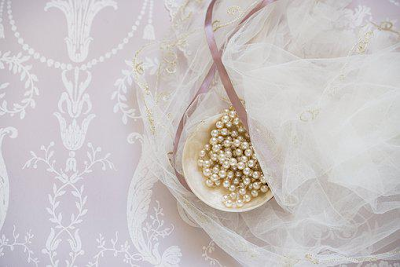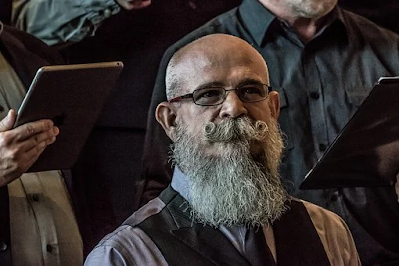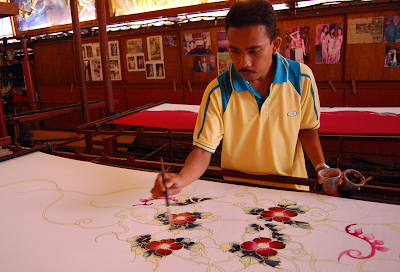Featured
- Get link
- X
- Other Apps
Ballet Costume
Ballet clothes serve as a visual representation of a performance and are a crucial component of stage design.
They constitute a live, fictitious representation of the event and are sometimes the only artifacts left after a production.
Renaissance and Baroque.
The court spectacles of the Renaissance in France and Italy are where ballet has its roots, and the first indications of ballet-specific costumes date to the early fifteenth century.
Images from this time period demonstrate the significance of masks and eyewear.
The lavishly created ballroom attire powerfully expressed the splendor of court.
Gauze made of flax, cotton, and silk that is semitransparent was woven.
Public theaters were being constructed in significant towns like Venice (1637), Rome (1652), Paris (1660), Hamburg (1678) and others from the start of the seventeenth century.
As stage costumes were more elaborately designed and composed of expensive materials, ballet performances were coupled with processional feasts and masquerades in various locations.
Male dancers often wore a tight-fitting, frequently brocaded cuirass, a short, draped skirt, and helmets embellished with feathers.
Female dancers wore layers of lavishly embroidered, fringed silk tunics.
Both dancers' tightly laced, high-heeled, and wedged boots, which made up the era's typical footwear, were significant components of the ballet costume.
The location of necklines and waistlines, as well as the design of hairstyles, were based on the components of daily clothes, however on stage, crucial aspects were often exaggerated.
From 1550, ancient Roman attire had a great influence on costume design.
Silk skirts were voluminous.
Roman armor had an impact on the attire of the male dancers.
Dark copper to maroon and purple were common ballet outfit hues.
Lincoln Kirstein's Four Centuries of Ballet, which covers the Renaissance and Baroque eras, provides a more thorough explanation of the theatrical attire throughout those times (1984, p. 34).
The degree of extravagant ornamentation on ballet costumes expanded starting in the seventeenth century thanks to silks, satins, and textiles embroidered with real gold and valuable stones.
For male dancers, costumes had evolved into a kind of uniform decorated with symbolic adornment to suggest character or occupation; for example, scissors denoted a tailor.
Court dress remained the conventional outfit for female performers.
In 1675, the first ballet was performed in Russia, and the country thereafter embraced European ballet styles.
While male performers' clothes allowed them complete freedom of movement, female dancers' bulky clothing and supporting structures prevented them from making elegant moves.
However, men dancers en travesti often wore skirts that were knee-length.
The lavishly embellished clothing of this time represented the splendor of the court; outfit details and silhouettes were emphasized to be noticeable and recognizable to onlookers watching from a distance.
Eighteenth Century.
From the start of the eighteenth century, the Paris Opéra served as the hub of European dance.
Stage clothes were more ornate but nevertheless fairly similar in shape to the ones worn often at Court.
The panier, a hooped petticoat, debuted about 1720 and raised skirts by a few inches.
Court attire, ballet costumes, and popular building architecture all used elaborate rococo designs and ornamental garlands throughout the reign of Louis XVI.
As stage clothes were mostly colored in delicate pastel shades of citron, peach, pink, azure, and pistachio, flowers, flounces, ribbons, and lace enhanced this sumptuous feminine design.
After the French Revolution in 1789, in particular, male costumes resembled the more conservative and austere Neoclassical style, which dominated the design of every day fashionable clothes.
Female dancers in male roles also gained popularity.
However, heavy wigs and headdresses continued to limit dancers' range of motion.
Russian and European ballets both emerged throughout the eighteenth and nineteenth centuries and were often seen as an essential component of the opera.
The ideals of Romanticism were reflected in female stage costumes starting in the early nineteenth century with the introduction of close-fitting bodices, floral crowns, corsages, pearls on fabrics, as well as necklace and bracelets; male costumes were still primarily designed in a Neoclassical manner.
In addition, the importance of the role of the ballerina as the star dancer increased and was emphasized with form-fitting corsets, glittering bodices, and lavish headdresses.
A new fashion in ballet costumes emerged in 1832, when Marie Taglioni's gauze-layered white tutu from La Sylphide revealed the legs and perpetually toe-shod feet.
Ballet outfits started to have a more fitted form after this.
Ballerinas were forced to perform in pointe shoes at all times due to the choreography.
The Russian ballet continued to advance in the nineteenth century, and authors and musicians like Tolstoy, Dostoevsky, and Tchaikovsky altered its definition by creating narrative ballets.
Fantasy clothing became immensely popular because to the fairy-tale ballets that classical ballet choreographers like Marius Petipa developed, such as The Sleeping Beauty (1890), Swan Lake (1895), and Raymonde (1898).
Twentieth Century.
Under the more permissive guidance of the Russian choreographer Michel Fokine, ballet clothing underwent another reformation around the turn of the century.
Ballerina skirts later evolved into knee-length tutus that were meant to highlight the point work and complex spins that were the main emphasis of dance practice.
Isadora Duncan, a dancer, liberated ballerinas from corsets and created a ground-breaking natural silhouette.
Serge Diaghilev, a Russian entrepreneur and producer, left his artistic stamp on this time period.
Professional costumers like Alexandre Benois and Léon Bakst showed, in productions like Schéhérezade (1910), how Orientalism had permeated both dress and the theater.
In fact, avant-garde fashion designers like Jean Poiret had already adopted the tunic silhouette that dancers had adopted in the years before to World War I.
In the 1920s, costume designers modernized traditional Russian narrative ballets with exotic tunics and veils wrapped around the body.
Instead of the traditional tutu and feather headpiece, ballet dancers wore loose tunics, harem trousers, and turbans.
Instead of subdued pastel hues, vivid tints like yellow, orange, or red—often in chaotic patterns—gave the viewer a never-before-seen sense of exhilarating exoticism.
Modernism and Postmodernism.
Modernism relaxed the regulations governing ballet costumes, and following Diaghilev's passing in 1929, designers were no longer constrained by the demands of purists.
Ballet dancers now perform in a variety of costumes, some of which still include classic Diaghilev designs.
Lez Brotherston, a costume designer, transformed the typical gracile female cygnets into topless, feather-legged male swans for contemporary performances like Matthew Bourne's Swan Lake.
However, ballerina shoes have been a popular topic among fashion designers of the 1990s.
The ballerina shoe made its transition from the stage to the street thanks to the exquisite, heelless shoes created by the Chanel fashion company and bound with ribbons.
Find Jai on Twitter | LinkedIn | Instagram
See also:
Dance and Fashion; Dance Costume; Theatrical Costume.
References And Further Reading:
André, Paul. The Great History of Russian Ballet. Bournemouth, U.K.: Parkstone Publishers, 1998.
Chazin-Bennahum, Judith. A Longing for Perfection: Neoclassic Fashion and Ballet. Oxford: Fashion Theory 6, no. 4 (2002): 369–386.
Clarke, Mary, and Clement Crisp. Design for Ballet. London: Cassell and Collier, Macmillan Publishers, Ltd., 1978.
Kirstein, Lincoln. Four Centuries of Ballet. New York: Dover Publications, Inc., 1984.
Morrison, Kirsty. From Russia with Love. Canberra: National Gallery of Australia, 1998.
Reade, Brian. Ballet Designs and Illustrations 1581–1940. London: Her Majesty’s Stationery Office, 1967.
Schouvaloff, Alexander. The Art of Ballet Russes. New Haven, Conn., and London: Yale University Press, 1997.
Williams, Peter. Masterpieces of Ballet Design. Oxford: Phaidon Press, Ltd, 1981.
Wulf, Helena. Ballet Across Borders. Oxford and New York: Berg Publishers, 1998.
- Get link
- X
- Other Apps











